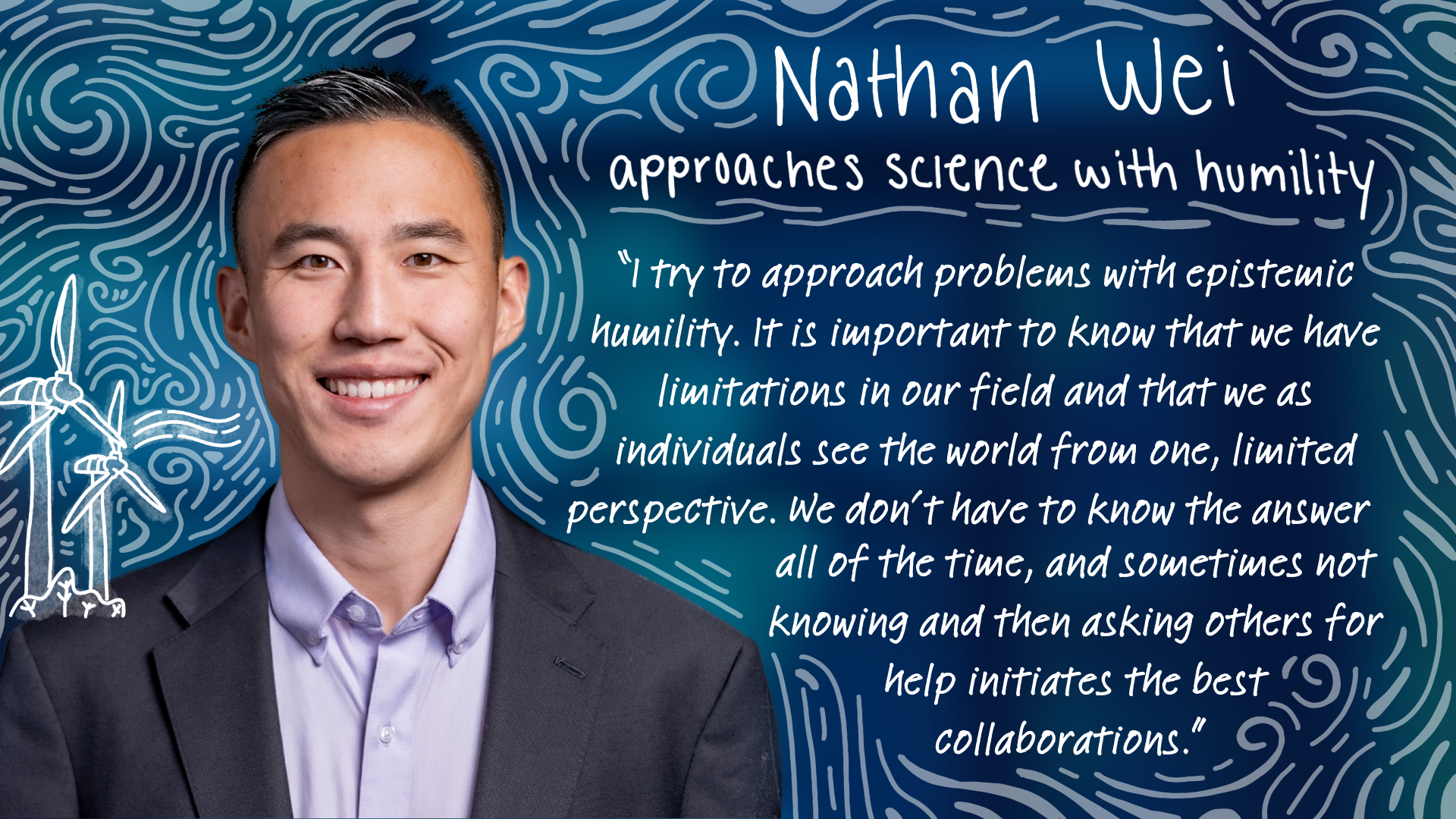Nathan Wei on renewable energy, fluid mechanics, and the shaping of humble engineers
October 10, 2024
With a research career dedicated to atmospheric wind and fluid mechanics, Nathan Wei, assistant professor in mechanical engineering and applied mechanics at the School of Engineering and Applied Science, takes his endeavors almost wherever the wind blows. Guided by his desire to make an impact in the realm of energy and sustainability and his commitment to mentoring the next generation of problem solvers, a very intentional wind blew Wei to Penn, where he can do both with creative freedom.
“In academia I can dive into both fundamental and applied science while having the opportunity to teach, mentor and guide today’s students, our future engineers,” says Wei. “At Penn, I can collaborate with and learn from world-class engineers who are already tackling the many pressing challenges in modern society, which are not purely engineering challenges, with an interdisciplinary approach.”
Wei’s interests span the intersection of unsteady aerodynamics, climate science, and wind-energy technologies, as well as their ecological, environmental, and societal implications. He sees interdisciplinary collaborations as large and long-term goals at Penn. But first, he plans to find his niche, develop his expertise, and work with students to begin to approach energy and sustainability problems in a collaborative way.
One of Wei’s potential research ideas at Penn is to develop field experiments with incoming graduate students to measure large-scale atmospheric flow using tethered balloons, drones, or other airborne platforms to track and model wind movement.
“Working with students in the field teaches them how science and life work,” says Wei. “There is not always a right or wrong answer when you come face to face with unsteady, unpredictable weather patterns that challenge your models and expectations. The chaos and turbulence of the atmosphere is a metaphor for life. You have to adapt to it and build resilience.”
Read more at Penn Engineering Today.
Search
RECENT PRESS RELEASES
Related Post




